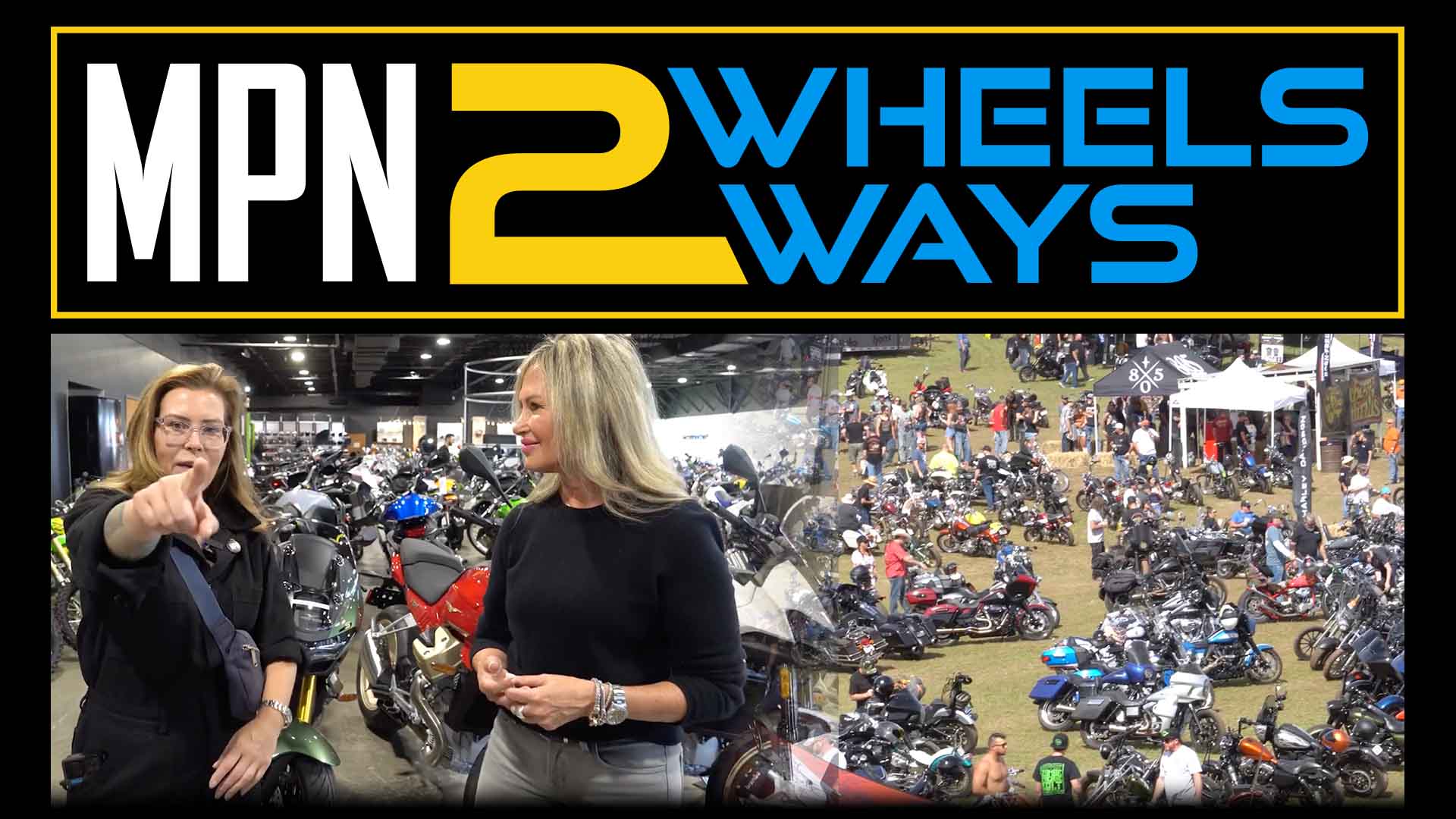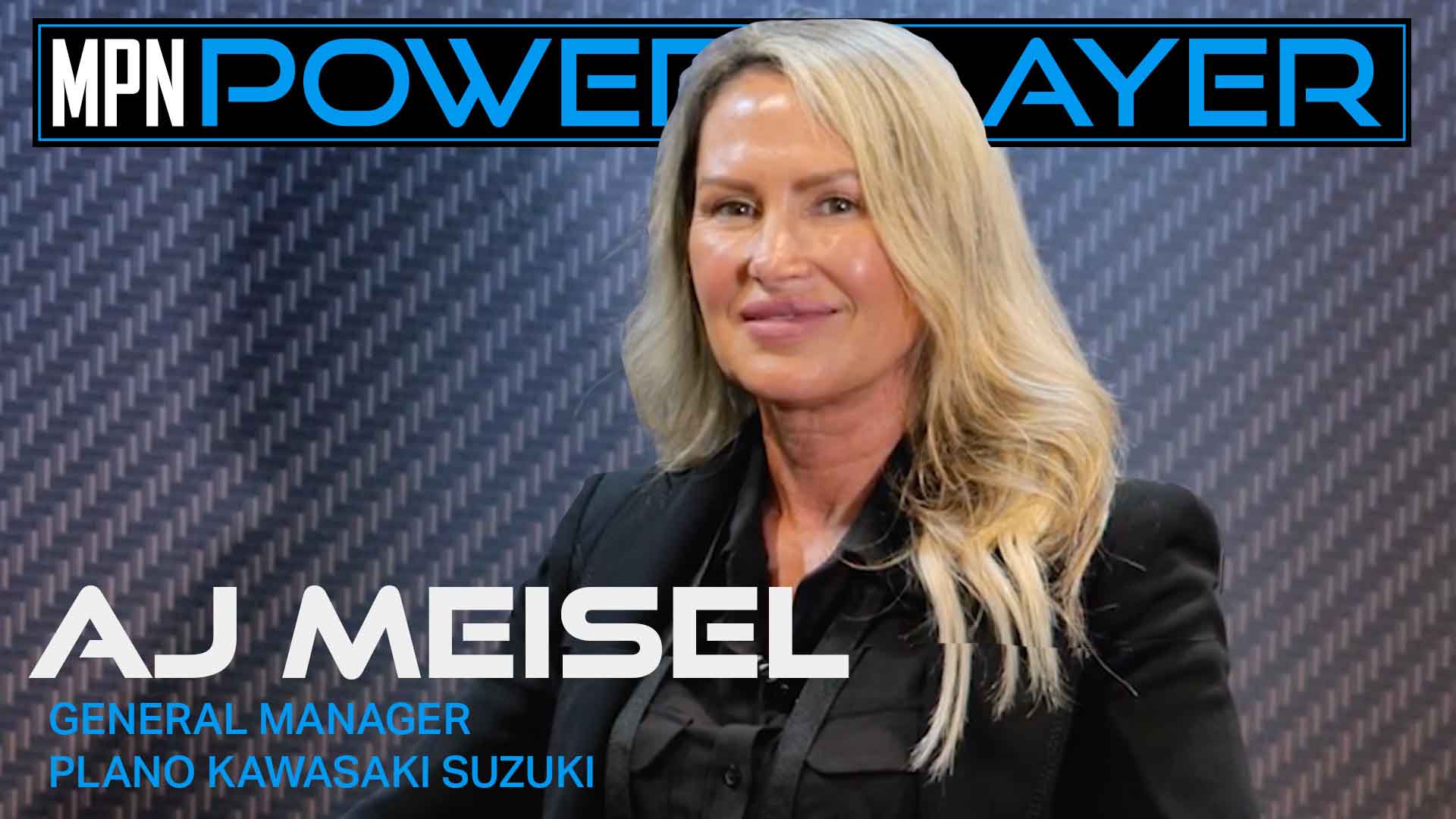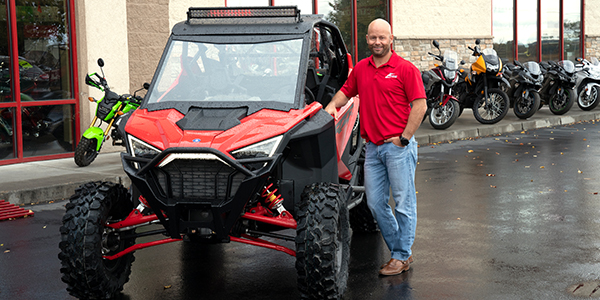
From his first-hand experience as an automotive and powersports dealer, Ryan Gentry, president at Edge Performance Sports in Ontario, OR, and co-founder of PSXDigital, an A.I.-powered customer experience management platform for powersports dealerships called CXMAi, focused on CRM, inventory, marketing automation and websites, walks MPN through the challenges that drove his dealership to take the leap into new technology.
MPN: Can you explain your résumé and how you got started in the auto and powersports industry?
RG: I grew up in the automotive industry and it was a family business. My grandfather owned a Ford dealership and my dad had Ford Subaru. When I got out of college, I worked for a couple big auto groups then came back and worked with my dad. Eventually, I started buying some stores and bought him out.
I started snowmobiling and a friend of mine asked me if I wanted to buy a dirt bike, so I did. I think I rode it two times and I was totally hooked on powersports; the comradery of it and the people I got to spend time with and the places we went. That’s when I started thinking, it’d be fun to buy a powersports store someday. When one became available, I formed Edge Performance Sports and began the business back in 2004. At that time, I owned three car stores and the powersports store. I sold my auto stores in 2017, and decided to just focus on powersports because that’s where my true passion is. I hope to pass down the legacy to my own kids someday.
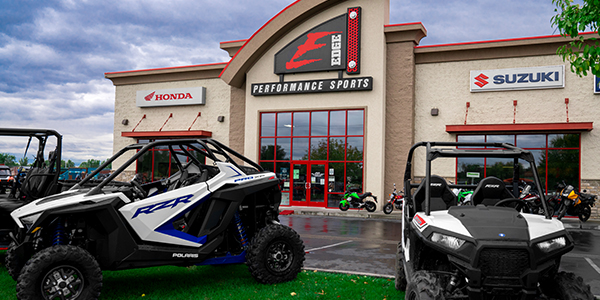
MPN: What are some aspects of Edge Performance Sports that make your dealership stand out from the competition?
RG: Hands down, the things that differentiate us are our culture, our people and our ability to adapt to change and accept technology. A lot of people talk about culture, core values and their people, but they absolutely are the most important aspects of our business. It is nice to have a big building, a lot of brands and a lot of inventory, but at the end of the day, the decisions that you make have to be guided by something special in order to be different.
We spend a lot of time focusing on our culture. We hold a voluntary meeting once a week to talk about what’s going on, review things that happened during the week, and we usually associate it with a book that we are reading. I think it allows us to create trust in the dealership and become very intentional about improving on each thing that we do.
Right now, we are reading Pound The Stone by Joshua Medcalf. The premise of the book is that a stone cutter will hit a stone the exact same way over and over again. He’ll hit it 99 times and the stone won’t break. But on the hundredth time, the stone will break. So, we relate that to our work environment. It’s the little things that we do day in and day out that aren’t flashy or sexy; success is based upon being able to do the small things consistently, over and over again for a long period of time. Over time, those things really start to multiply and add value to your business and your customers.
MPN: At your dealership, what were some of the early challenges that you faced as a powersports dealer?
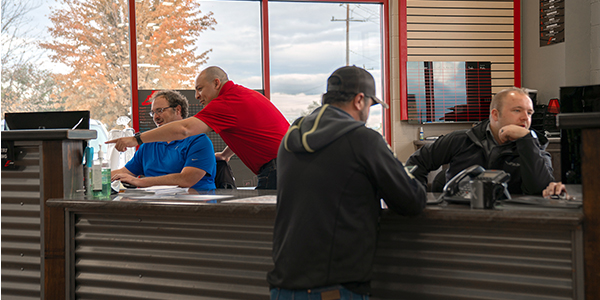
RG: Technology challenges are immense in powersports. I loved the technology we used in automotive. There wasn’t anything that was innovative or advancing early on in powersports.
There are a lot of similarities between automotive and powersports, but there are large differences between the data and the customers. So, I could never really find anything that was comprehensive and would work to bring value to the dealership.
One of my biggest frustrations in powersports was inventory management. In automotive, we had all these tools to help us manage inventory and in powersports, we had an Excel spreadsheet, so the data was very fragmented.
Another challenge was with websites. You could get a website, but there weren’t many advanced services offered to help post live photos of inventory, for instance.
The challenges were the same that I saw on the automotive side 10-15 years prior. I knew there was a better way of doing things and that we needed to help powersports businesses run more efficiently and align more with customers; to help the customer find what they’re looking for, delivered in a way they needed, but it just wasn’t available.
MPN: Did those challenges in technology you noticed in your dealership help with the creation of PSXDigital?
RG: I’ve always esteemed good technology and was heavily involved in dealer advisory boards for some software companies as an early adopter of progressive solutions. I spent a lot of time at conferences and was able to talk to some really smart people and learn a lot about technology, while on the dealership side of things, to be able to say what’s working and what isn’t. Identifying the frustrations as a dealer helped with the creation of PSXDigital.
Our goal and mission statement when we started PSXDigital was to develop technology that could revolutionize and change the industry. As a benefit, I knew that my dealership would gain an incredible lift in business and profitability, but I didn’t really expect the enormity of the impact PSXDigital would have on me and my store. It has been a secondary blessing to this whole project. Efficiency and transparency for powersports dealerships was the first.
I remember sitting in my office one day looking at the data and thinking, “I’ve been running my dealerships on complete BS for the last 20 years,” because even in using my previous technologies, I didn’t have true accountability. I finally had visibility to what people did and could see how much better the data got and watched how much more efficient we were as a result. It really struck me because before, people were using the technology that I put into my stores because I wanted them to use it. It was beneficial, but it wasn’t as advantageous as it should have been because the data wasn’t transparent. So, it was a very big “aha!” moment for me.
MPN: Can you further explain how PSXDigital’s platform has opened the door at your dealership?
RG: In the past, we had six different logins for six different applications. None of them talked with each other, so it was inefficient and cumbersome. It is very difficult as a dealer to figure out where to go to fix an issue when different vendors are blaming and pointing the finger at each other.
Another thing I noticed with other CRMs is that even if we can get all of this data consolidated into one place, then what do we do with it? And was the data that was going into the system accurate in the first place? I can now answer those questions positively and without a doubt. PSXDigital opened the door to make my team more accountable.
In designing CXMAi, we really focused on integrating the entire platform to eliminate multiple steps in the process and to make it easy for the salesperson to use. We also made it easy for management to get with a customer and give that customer what they want. With integrated data, we gather the right information and market to the customer efficiently, all within the same system and in the same database, so it isn’t fragmented.
In making it easy for our sales staff and management to be in the system, we made it easy for them to want to be in the system. In the past, it was always from the top down; forcing people to use an inefficient technology. That’s a very difficult way to run a dealership and run it successfully. With PSXDigital, it’s more of a bottom up approach; how do we put tools in place to help our people more easily operate on a day-to-day basis? That was the premise of, and why we started with, our mobile app — to put that in the hands of salespeople.
I don’t have to go back to my desk and log a customer anymore. I can do it from anywhere. And not only can I do it right from my phone, but I’ve got all my inventory data right there. I can do a trade appraisal right there, gather the customer’s information right there; I don’t have to go anywhere. When the tools become part of the process, it’s a system the salespeople want to use.
Naturally, you start getting good data in the system. PSXDigital technology assists salespeople in gathering and entering information in a way that is completely transparent to the management team and everybody in the dealership in real-time. Now, instead of the manager going out and beating up salespeople, the manager is able to work with them and recognize when they need help; I know that before they even come see me. We are all working together and communicating on the same page through the whole process.
MPN: You mentioned in a September MPN article that your salespeople each average 38 units sold per month. What helped your team reach that goal?
RG: PSXDigital helps us do more with less. We run with less people, especially with the volume that we are able to do. A lot of that success comes from the system creating accountability in what we do on a daily basis. The platform helps me get customers in and helps me remember to follow up with that customer. CXMAi holds you accountable to those steps and reinforces the processes. It is similar to the book Pound The Stone; it’s all these little things that we consistently do day in and day out that accumulate over time. After about four or five months on the system, our business just really started to do more volume. Our gross profits went up and our customers were happier. It was because the technology was freeing that cadence in our dealership and creating good habits that whether, as a human being, we felt like doing it or not, the technology wanted it done.
MPN: Do you have any advice for dealers who might be afraid or intimidated to adopt new technology to their dealership?
RG: I was that guy. I remember sitting with my general manager one morning about 60 days in and I said, “What the hell are we doing?” It’s scary because we were already successful, but we knew there was even more opportunity with the change. My best advice and what I learned over the years, being both a dealer and developing technology, it’s going to sound cliché, but it’s a journey, not a destination.
Have a clear understanding of what you want to accomplish before you put new technology in place. I can say that from experience. So many times, I’d go to a convention, I’d fall for the latest pitch, I would put it in my store with no real plan and it would fail. When a provider tells you that they can fix everything, they can’t.
I think it is really important to know that I’m not going to go get some great technology and suddenly my life is going to be better. It really is a journey of customizing what works best in my store, which vendors are going to support me the best and what fits my business plan. It doesn’t happen overnight, and the solution is always evolving. Find technology that is also evolving.
The other advice I would give a dealer is to stick with it. There’s no silver bullet. A lot of times we think, I’m just going to dip my big toe in the water, see what happens, and if it doesn’t work, I’m going to pull out and go back to the way I did business before. There were times when I was switching technologies in my store and I wanted to quit because I got fearful. It got tough. But if you stick to the process and you mature along with it, it can do incredible things in your dealership and you’ll emerge successful.
For more information about PSXDigital, visit psxdigital.com.











